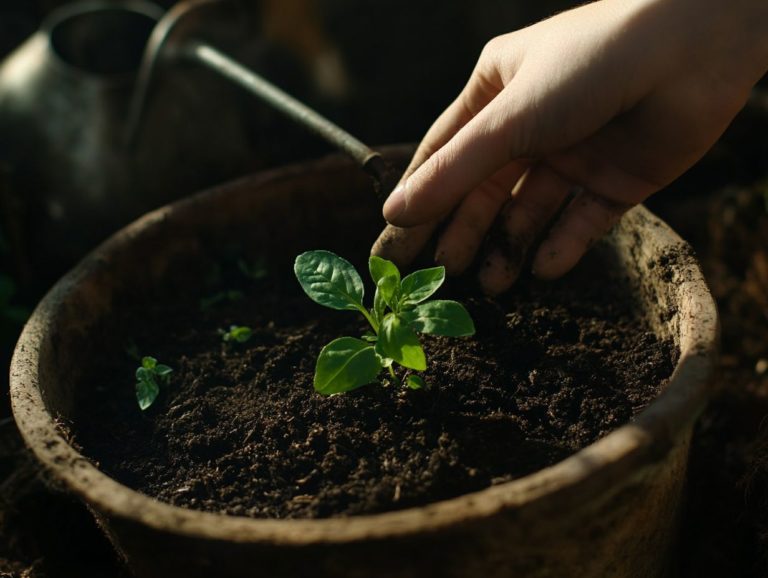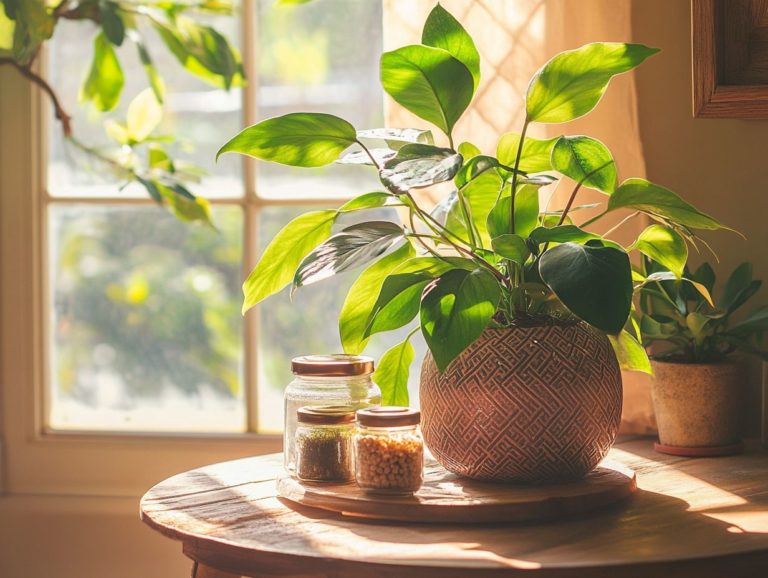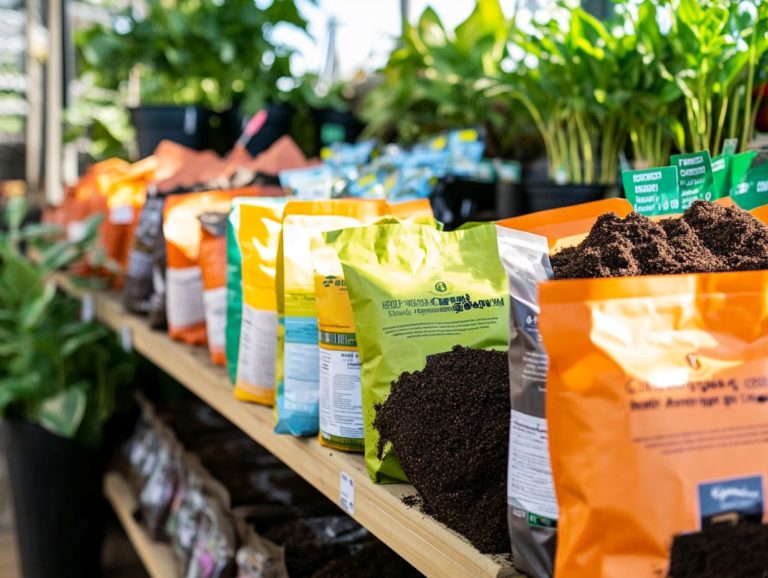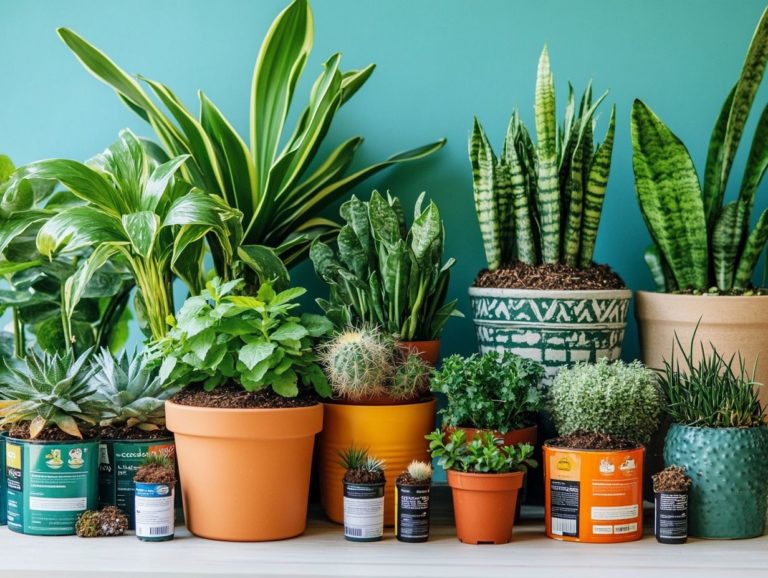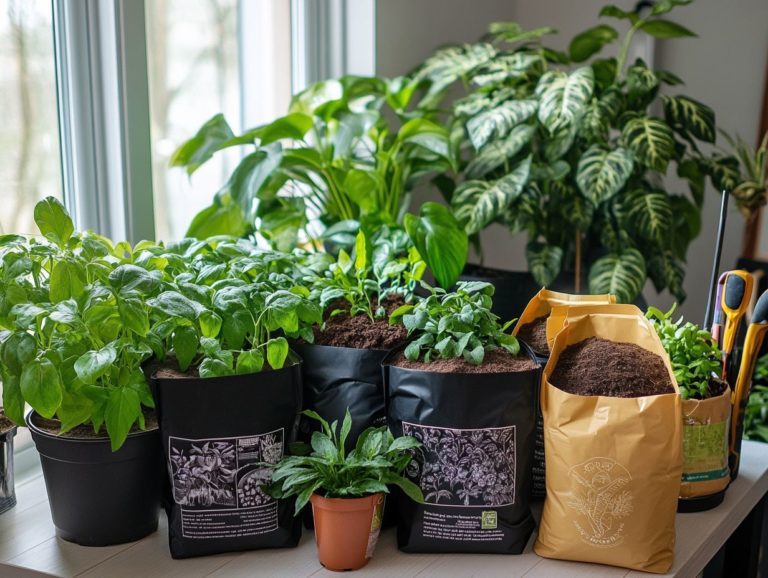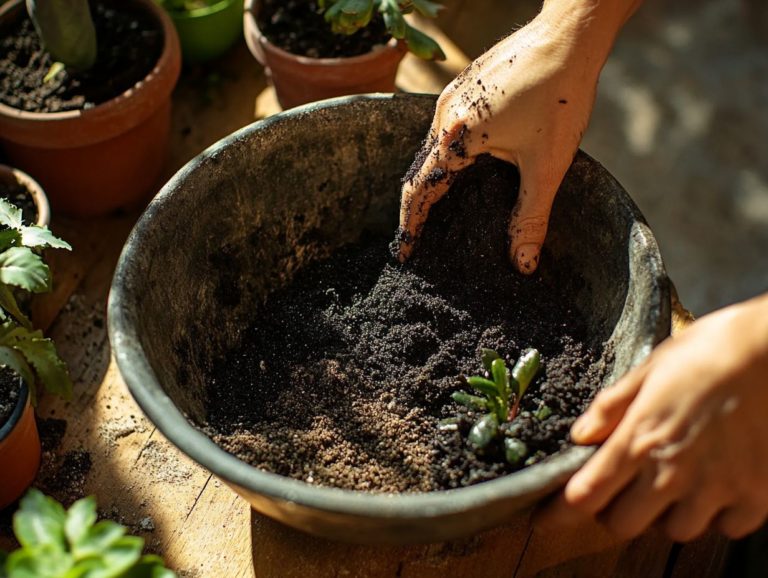How to Fertilize Your Indoor Plants Effectively
Indoor plants infuse life and beauty into your home, but nurturing them healthily requires more than just a splash of water and a beam of sunlight.
Fertilization is key in delivering the essential nutrients they need to truly thrive. This guide will walk you through what fertilization entails and why it s vital. You will explore the various types of fertilizers available, and outline the optimal timing and methods for application.
You ll also learn to recognize the signs of over or under-fertilization.
You ll find practical tips to achieve the best results for your plants. Jump in and transform your indoor gardening skills today!
Contents
- Key Takeaways:
- Understanding Indoor Plant Fertilization
- Types of Fertilizers for Indoor Plants
- When and How to Fertilize Indoor Plants
- Signs of Over and Under Fertilization
- Tips for Effective Fertilization
- Frequently Asked Questions
- What is the importance of fertilizing indoor plants?
- When is The Best Time to Fertilize Indoor Plants for optimal health?
- How often should I fertilize my indoor plants?
- What is the best type of fertilizer for indoor plants?
- How can I tell if my indoor plants need fertilizing?
- Are there any alternatives to traditional fertilizers for indoor plants?
Key Takeaways:

- Understanding the importance of fertilization for indoor plants is crucial for their growth and overall health.
- Choosing the right type of fertilizer, whether organic or synthetic, can greatly impact the effectiveness of fertilization.
- Proper timing and application methods, along with identifying and addressing signs of over or under fertilization, are key for effective fertilization of indoor plants.
Understanding Indoor Plant Fertilization
Understanding indoor plant fertilization is essential for any gardening enthusiast looking to maintain healthy plants and promote their growth.
The process of fertilizing houseplants involves providing vital nutrients through various types of fertilizers. This can profoundly influence overall plant health.
Knowing when to fertilize your indoor plants, along with the right application methods and frequency, is crucial to avoid pitfalls like nutrient deficiency or fertilizer burn.
Embracing a complete way of caring for plants will lead you to vibrant and thriving indoor gardens.
What is Fertilization and Why is it Important?
Fertilization is the art of enriching your soil with essential nutrients. It is a fundamental aspect of nurturing your indoor plants. It s not just a task; it s a commitment to their growth and vitality.
Understanding the nutrients at play is key. Macronutrients like nitrogen, phosphorus, and potassium are the heavyweights needed in larger amounts to fuel leaf growth, root development, and overall plant vigor.
On the other hand, micronutrients such as iron, manganese, and zinc are required in smaller doses. They are essential for your plants metabolic processes and overall health.
Ensuring these nutrients are readily available for uptake is crucial. This directly influences your plant’s ability to photosynthesize, fend off pests, and flourish in its environment.
By being mindful of these nutrient needs, you can cultivate a thriving ecosystem, resulting in lush greenery and spectacular blooms.
Types of Fertilizers for Indoor Plants
Selecting the right type of fertilizer is essential for nurturing your indoor plants. Different fertilizers provide unique benefits, each tailored to meet the specific needs of various plants, whether they are vibrant tropical houseplants or resilient succulents.
Organic vs. Synthetic Fertilizers
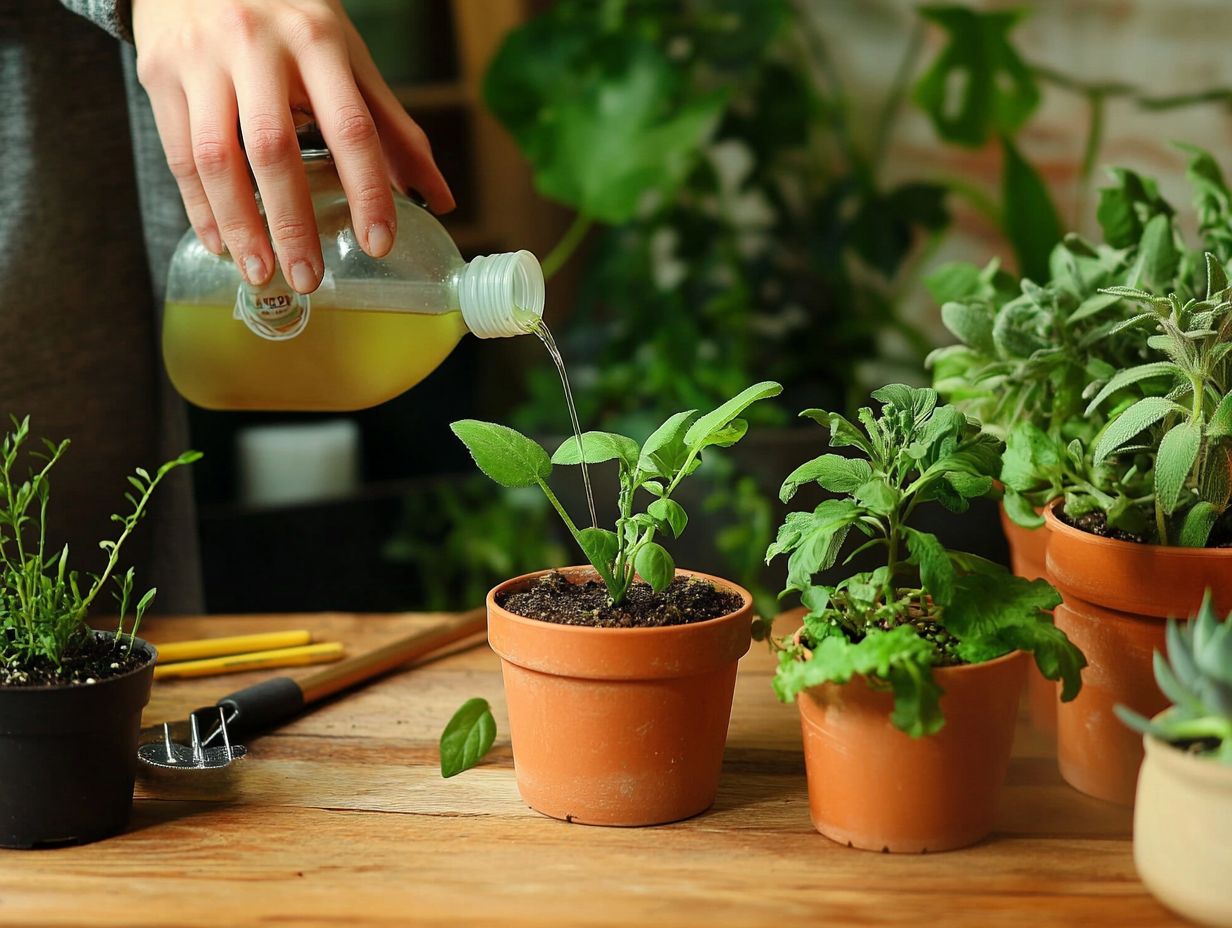
Organic fertilizers, sourced from nature, and synthetic fertilizers, crafted through chemical processes, each bring their advantages and challenges to indoor plant care.
Organic options like compost and fish emulsion are celebrated for enhancing soil structure and fostering beneficial microbial life. Meanwhile, synthetic fertilizers, such as Miracle-Gro, provide the benefit of precisely measured nutrient contents, allowing for quick absorption by your plants.
Regarding environmental considerations, organic fertilizers tend to champion sustainability and minimize chemical runoff. In contrast, synthetic counterparts may contribute to soil degradation over time.
Your choice between these two types often depends on the specific needs of your indoor plants. For instance, heavy feeders may flourish with the rapid nutrient release offered by synthetic fertilizers, while others might thrive on the gradual nutrient availability provided by organic options.
By understanding these distinctions, you can make informed decisions tailored to the unique requirements of your plants.
Slow-Release vs. Liquid Fertilizers
When taking care of your indoor plants, you often weigh the benefits of slow-release versus liquid fertilizers. Each type has unique advantages for promoting growth.
Understanding these fertilizing methods is essential for growing vibrant, healthy plants. Slow-release fertilizers gradually dispense nutrients, making them perfect for busy lifestyles. They are also great for plants that thrive on a steady supply of nutrients.
Liquid fertilizers offer a rapid nutrient boost. They are excellent for enhancing growth in fast-growing plants or for addressing specific deficiencies.
When and How to Fertilize Indoor Plants
Knowing when and how to fertilize your indoor plants is super important! This helps you avoid problems like nutrient deficiency or fertilizer burn.
Frequency and Application Methods
The frequency and methods for fertilizing your indoor plants depend on plant type, growth cycle, and your chosen fertilizer.
Tropical houseplants usually thrive on more frequent feedings, ideally every two to four weeks in their active growing season. Succulents, being drought-resistant, may only need a boost once a month.
When the time comes to provide nutrients, you have several methods available. Foliar feeding allows plants to absorb nutrients directly through their leaves.
You might also try compost tea, which offers a gentle, organic approach. It enriches the soil and promotes beneficial microorganisms for overall growth.
Signs of Over and Under Fertilization
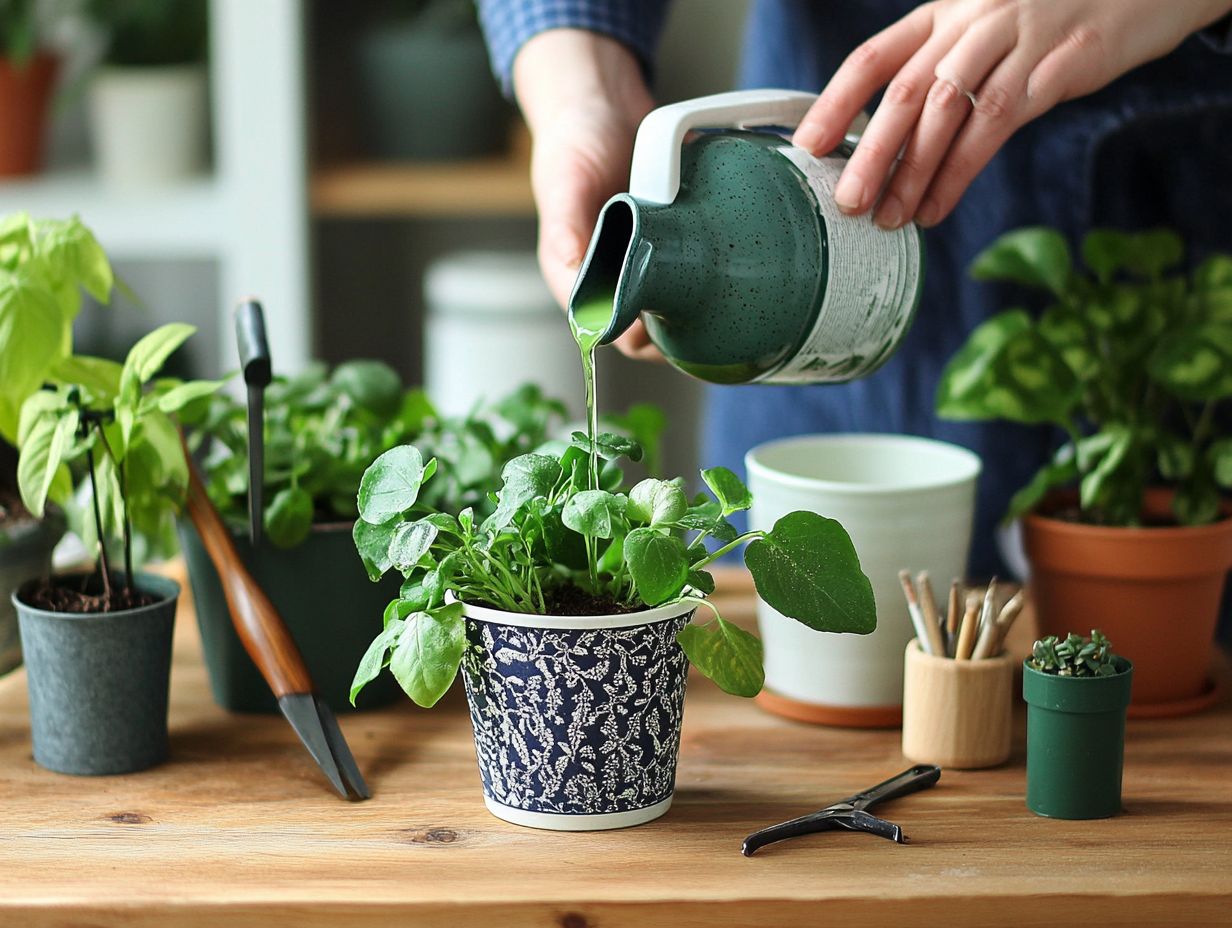
Recognizing the signs of both over and under-fertilization is crucial for keeping your plants healthy. Imbalanced fertilization can lead to issues like fertilizer burn or nutrient deficiency.
By keeping an eye on these signs, you can nurture your greenery effectively.
Identifying and Addressing Issues
Addressing nutrient deficiency and fertilizer burn is key for maintaining healthy plants and encouraging growth. Spotting these problems early can greatly impact your garden’s health.
Symptoms like yellowing leaves, stunted growth, or brittle foliage often signal deficiencies in nutrients like nitrogen, phosphorus, or potassium.
To tackle these issues, start with a soil test to find missing nutrients. Then, use organic options for targeted fertilization.
Tips for Effective Fertilization
Effective fertilization is essential for a healthy plant care routine. With these key tips, you can significantly boost the health and growth of your indoor plants!
Dos and Don’ts for Optimal Results
To achieve optimal results in your indoor plant care, there are essential dos and don’ts to follow for healthy growth and vibrant plants.
Knowing these guidelines improves how your plants look and feel while significantly impacting their overall well-being. By paying close attention to the nutritional needs of different species, you can select the right fertilizer and establish an appropriate application frequency. Additionally, understanding the best watering techniques for indoor plants is crucial for their health.
Don’t miss the signs of over-fertilization; look out for yellowing leaves or stunted growth! To ensure your plants thrive, it’s important to understand the science of watering indoor plants and feed them during their active growing season, typically in spring and summer, to maximize nutrient absorption and foster robust development.
Frequently Asked Questions
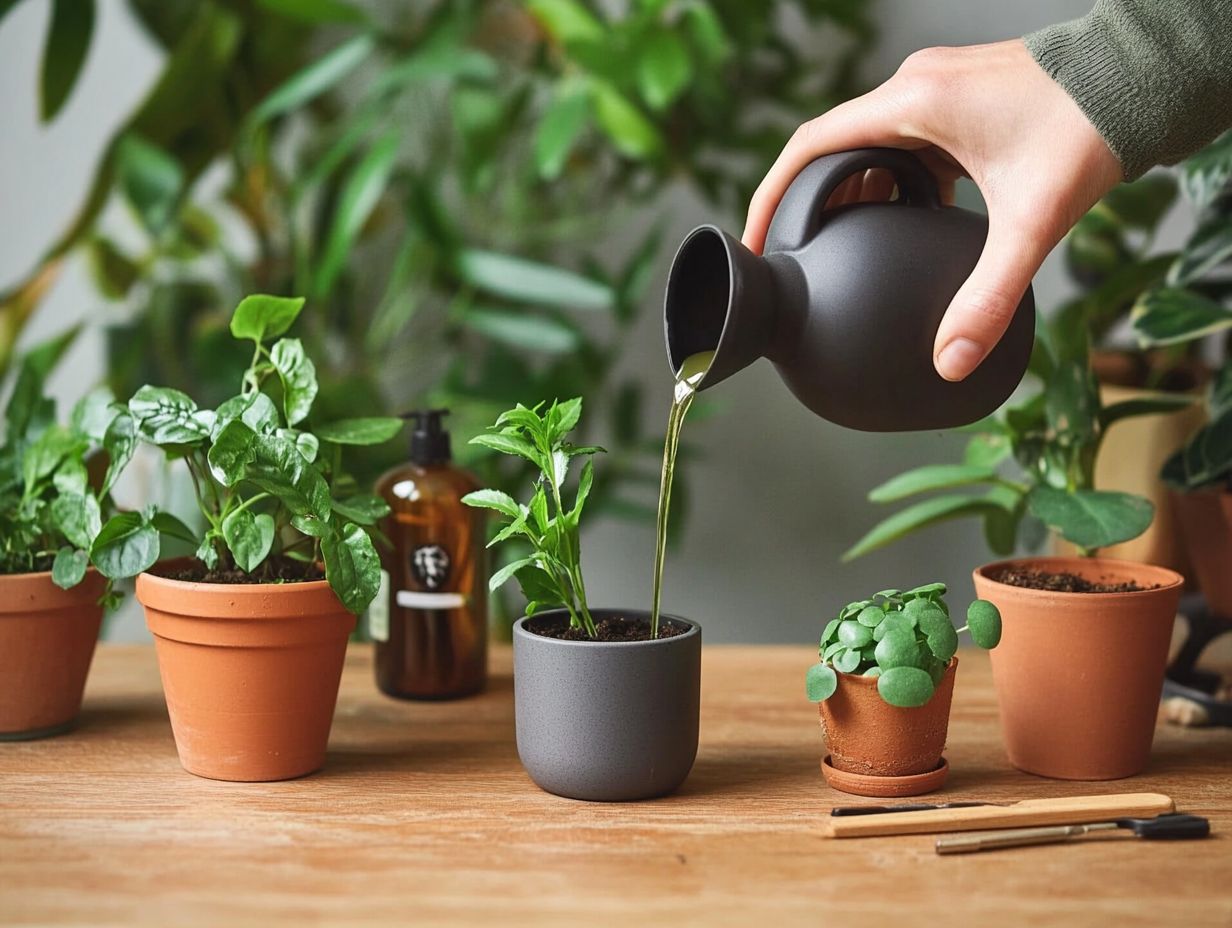
What is the importance of fertilizing indoor plants?
Fertilizing provides essential nutrients to your indoor plants, promoting healthy growth, vibrant foliage, and strong roots. It also replenishes nutrients that may have diminished over time in the soil.
When is The Best Time to Fertilize Indoor Plants for optimal health?
Fertilize your indoor plants during their active growing season, typically in the spring and summer months. This timing helps prevent issues like fertilizer burn and ensures plants efficiently utilize nutrients.
How often should I fertilize my indoor plants?
The frequency of fertilization depends on the plant type and its specific needs. Different fertilizers, such as liquid, granular, and slow-release, may require different schedules. Generally, once a month during the growing season is sufficient, but some plants may need more frequent feeding. Always check the fertilizer instructions for specific guidelines.
What is the best type of fertilizer for indoor plants?
There are various types of fertilizers, including liquid, granular, and slow-release options. The best choice, whether organic or synthetic, depends on your plants’ needs and your preference. Consider an all-purpose fertilizer with balanced nutrients, keeping in mind the N-P-K ratio, which indicates the amount of nitrogen (N), phosphorus (P), and potassium (K) in the fertilizer.
How can I tell if my indoor plants need fertilizing?
If your indoor plants show signs of slow growth, yellowing leaves, or smaller leaf sizes indicating potential nutrient deficiency it may be time to fertilize. Always check your plant’s specific needs and soil conditions before proceeding.
Are there any alternatives to traditional fertilizers for indoor plants?
Yes, natural alternatives like compost, compost tea, and worm compost, as well as organic fertilizers made from natural ingredients, can effectively provide nutrients to your indoor plants. These options are environmentally friendly and popular among gardening enthusiasts.

